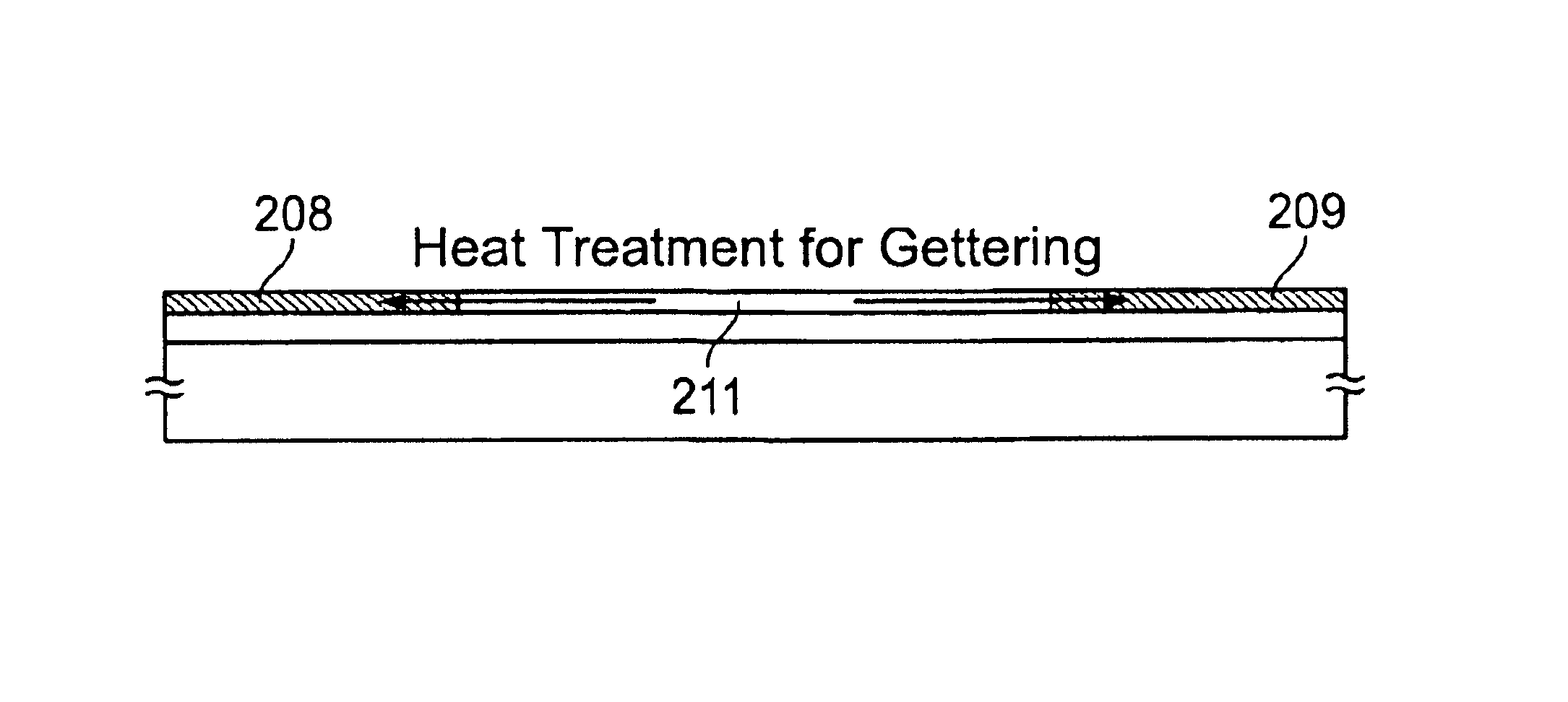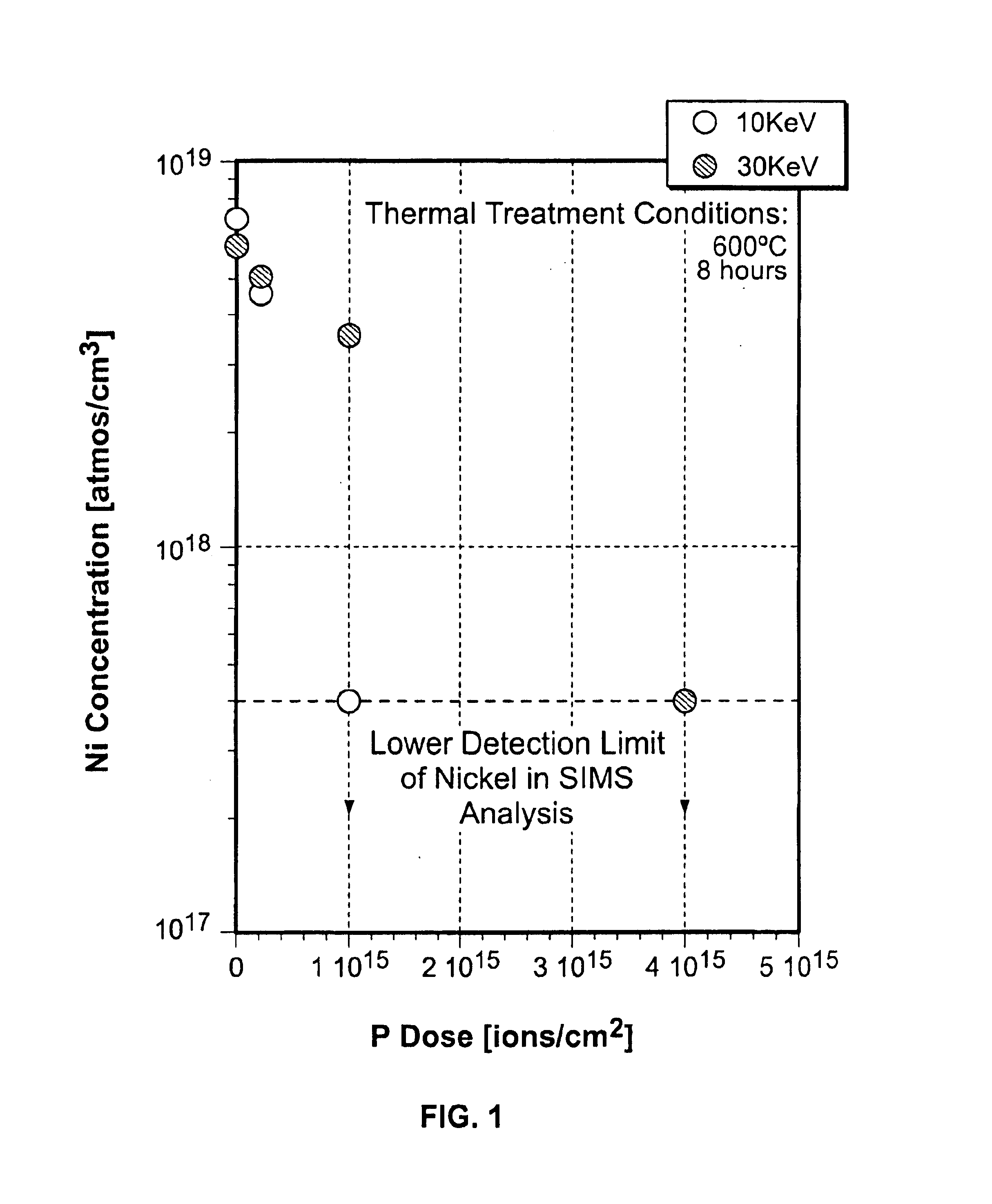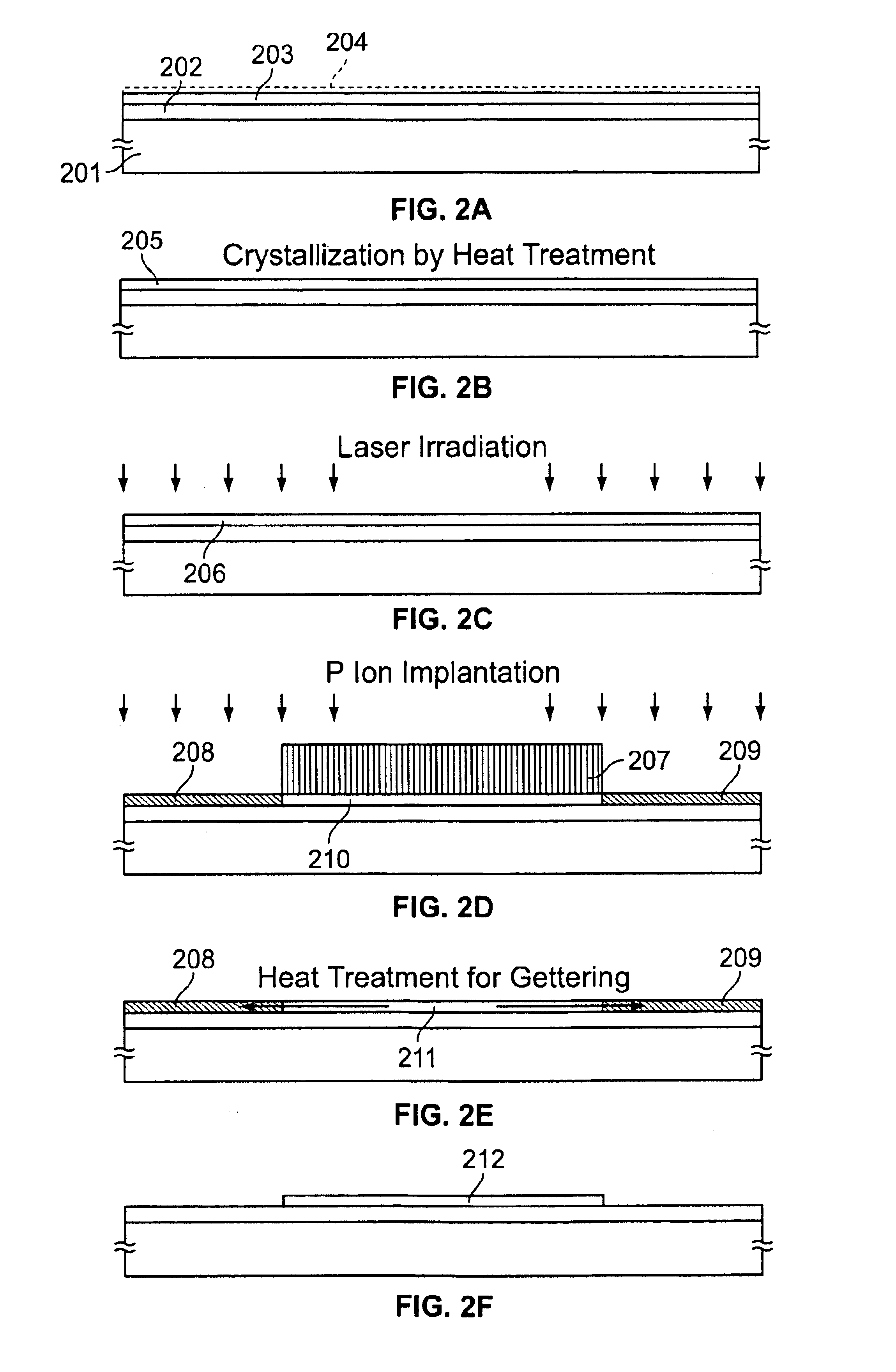Method of manufacturing a semiconductor device
a manufacturing method and semiconductor technology, applied in the direction of polycrystalline material growth, crystal growth process, chemically reactive gas, etc., can solve the problems of metal element having a bad influence on the electrical characteristics and reliability of a tft, glass substrates with a low thermal resistance may not be used, and it is not suitable to use noncrystalline silicon films as active layers, etc., to achieve the effect of removing or removing
- Summary
- Abstract
- Description
- Claims
- Application Information
AI Technical Summary
Benefits of technology
Problems solved by technology
Method used
Image
Examples
example 1
[0061]The present example describes a means in which P (phosphorus) is used for gettering nickel from a crystalline silicon film (polysilicon film) crystallized by using nickel as the catalyst element and the effect thereof.
[0062]Referring first to FIG. 2A, a 200 nm thick silicon oxide film 202 was formed as a base film by means of plasma CVD on a glass substrate 201. Then, a 50 nm thick amorphous silicon film 203 was formed by low pressure thermal CVD (or by plasma CVD). An amorphous silicon film formed at a thickness of from 10 to 75 nm (preferably from 15 to 45 nm) is sufficient.
[0063]Otherwise, an amorphous semiconductor film containing silicon, such as SixGe1-x (where 0
[0064]The crystallization of the amorphous silicon film 203 was performed thereafter. For the details of the process conditions, reference can be made to the description of Example 1 in Japanese Patent Application Laid-open No. Hei 8-130652.
[0065]Then,...
example 2
[0137]The present example describes an example of crystallizing an amorphous semiconductor film by a different method from Example 1 with reference to FIGS. 10A to 10F. The details of this crystallizing means may be referred to Example 2 described in Japanese Patent Application Laid-open No, Hei 7-130652.
[0138]Referring to FIG. 10A, reference numeral 301 denotes a glass substrate, and a base film 302 and a 50 nm-thick amorphous silicon film 303 were formed thereon. Then, a silicon oxide film was formed thereon as a mask insulating film 304, and an aperture portion 305 was provided therein to selectively add a catalyst element therethrough (nickel is used again in the present example).
[0139]Then, an ultra-thin oxide film (not shown) was formed on the surface of the exposed portion of the amorphous silicon film 303 by irradiating UV light under oxygen atmosphere. This oxide film functions to improve the wettability of the amorphous silicon film. Subsequently, a nickel acetate solution...
example 3
[0151]The present example refers to a process for manufacturing a CMOS circuit having an N-channel type TFT and a P-channel type TFT provided in a complementary structure.
[0152]Referring to FIG. 11A, reference numeral 11 denotes a glass substrate; 12, a base film; 13, an active layer of an N-channel type TFT; and 14, an active layer of a P-channel type. The active layers 13 and 14 may be formed by using, for example, the island-like pattern 212 shown in FIG. 2F.
[0153]Then, a 150 nm-thick silicon oxide film was formed by plasma CVD or low pressure thermal CVD to obtain a gate insulating film 15 (FIG. 11A).
[0154]A metal film containing aluminum as the principal component was formed thereafter (not shown), and was patterned to provide a prototype for the gate electrode to be used in the later steps. Then, the technique described by the present inventors in Japanese Patent Application Laid-open No. Hei 7-135318 was applied. Thus, porous anodic oxide films 16 and 17, as well as dense ano...
PUM
| Property | Measurement | Unit |
|---|---|---|
| temperature | aaaaa | aaaaa |
| crystallization temperature | aaaaa | aaaaa |
| temperature | aaaaa | aaaaa |
Abstract
Description
Claims
Application Information
 Login to View More
Login to View More - R&D
- Intellectual Property
- Life Sciences
- Materials
- Tech Scout
- Unparalleled Data Quality
- Higher Quality Content
- 60% Fewer Hallucinations
Browse by: Latest US Patents, China's latest patents, Technical Efficacy Thesaurus, Application Domain, Technology Topic, Popular Technical Reports.
© 2025 PatSnap. All rights reserved.Legal|Privacy policy|Modern Slavery Act Transparency Statement|Sitemap|About US| Contact US: help@patsnap.com



